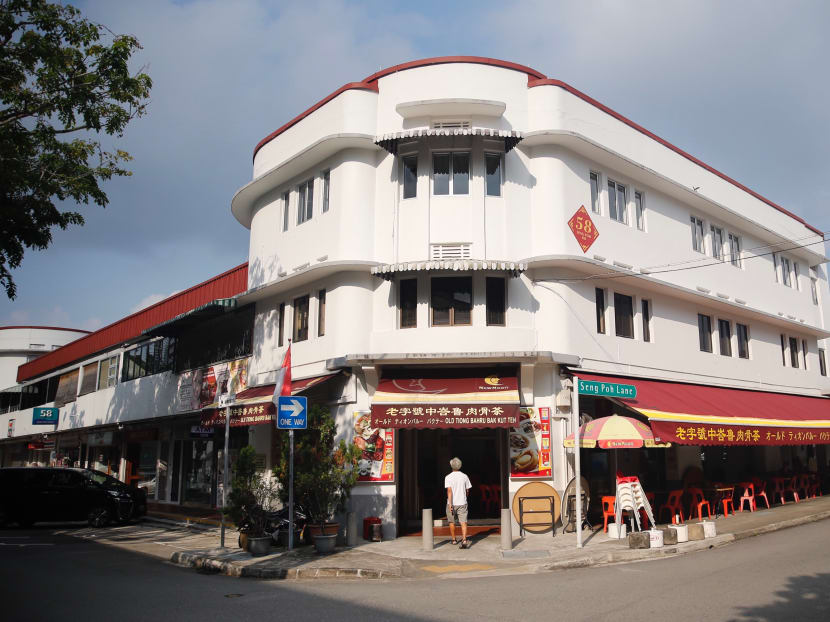Noise an issue at Tiong Bahru, but most residents at peace with businesses in the estate
SINGAPORE – Artisanal shops and eateries that have sprouted in Tiong Bahru estate have created buzz and upped the neighbourhood’s hip quotient, but they have also meant increased noise levels and more crowded sidewalks for some residents.
SINGAPORE – Artisanal shops and eateries that have sprouted in Tiong Bahru estate have created buzz and upped the neighbourhood’s hip quotient, but they have also meant increased noise levels and more crowded sidewalks for some residents.
Of the nine residents TODAY approached on Tuesday (July 24), most were either neutral or in favour of the changes in recent years, and appreciated the mix of traditional and contemporary shops in the pre-war estate.
But for Ms Rupa Krishnan, 49, who lives directly above some cafes and bars, the noise from patrons and merrymakers has been excessive.
Together with her sister Kala, 46, and four neighbours, Ms Rupa said she has contacted the authorities over the last two years about the issue.
“Because of the cafes and bars around, people are drinking and they become very unruly, loud and boisterous,” said the Eng Hoon Street resident, who added that the noise could extend up to 11pm.
If the authorities cannot regulate the noise and other inconveniences generated by the businesses, the establishments should be shut down altogether, said the sisters.
The Urban Redevelopment Authority (URA) announced on Tuesday that the premises occupied by 28 businesses on the first floor of residential buildings in Tiong Bahru estate would be re-zoned as residential with commercial use allowed on the first floor. They were previously zoned only for residential use but had obtained separate approvals for business operations.
However, 15 businesses including artisanal shops, art galleries, yoga and dance studios could be operating without approval. The URA is working with these businesses to meet the conditions for running a home-based business or a home office, but the businesses may have to relocate if they do not meet the conditions.
Other residents told TODAY the noise is sometimes generated by their newer neighbours who hold parties late into the night. “The downstairs neighbours used to hold parties that created a lot of noise, there was once I had to call the police at 2am and the police gave them a warning,” said Mdm Roslyn Lee, 74. She said that the ruckus stopped for about a month but soon resumed.
Seats set up on public walkways by food and beverage outlets have also hindered access to her apartment. “Some of the owners like to dine with their pet dogs at the side, and because I’m afraid of (dogs) I have no choice but to walk on the roads, whether rain or shine,” said Mdm Lee, who has lived in Tiong Bahru for more than a decade. “It used to be much quieter in the past.”
The gentrification of Tiong Bahru, which consists of conserved flats built by the Singapore Improvement Trust (SIT) – the predecessor of the Housing and Development Board – began around 2010, when the trendy cafes set up shop in the quiet low-rise estate. Other shops selling items ranging from books to clothes soon followed.
In 2015, the URA took enforcement action against 12 shops in the estate for operating from residential premises without approval, and they had to cease or move elsewhere. The move was not intended to diminish the vibrancy of the area, the URA said at the time.
Three years on, the majority of residents TODAY approached said they were unbothered by the changes and increase in businesses in the area.
The URA said on Tuesday there are about 120 authorised businesses located at the first storey of residential buildings, mostly within the conserved SIT flats. In 2015, the number of retail and food and beverage outlets in the area was reported to be about 70 (excluding the 12 shops the URA took enforcement action against).
Retiree Philip Cheang, 78, who has lived on Kim Tian Road for 40 years, said the cafes catering to the younger crowd do not bother him as traditional hawker fare is still available at the Tiong Bahru market. “We don’t bother too much about all the changes to the (neighbourhood),” he said.
Sport scientist John Fong recently moved to Kim Cheng Street after living in Sydney in Australia for two years, and said the blend of quality coffee joints and quaintness of the estate were big draws.
Although the estate gets busy on weekends and queues form at popular eateries such as Tiong Bahru Bakery, Mr Fong said it is still “not overcrowded and does not get too rowdy at night”.
Tiong Bahru market’s traditional hawkers have also experienced mixed fortunes with the increase in visitors and tourists.
Ms Anna Lee of 178 Lor Mee and Mdm Cindy Lim of Tiong Bahru Pau said they have encountered more patrons of different nationalities, including groups of tourists.
“After they go (to the cafes) for some coffee, they will still come to Tiong Bahru market to eat here,” said Mdm Lim, 52, in Mandarin.
But for Mr Thomas Koh of Koh Brother Pig’s Organ Soup, not many newcomers have been adventurous enough to try the stall’s dishes, which he called an “acquired taste”.
New eateries could make it harder for smaller or lesser-known stalls to survive, said Mr Koh, 30.










